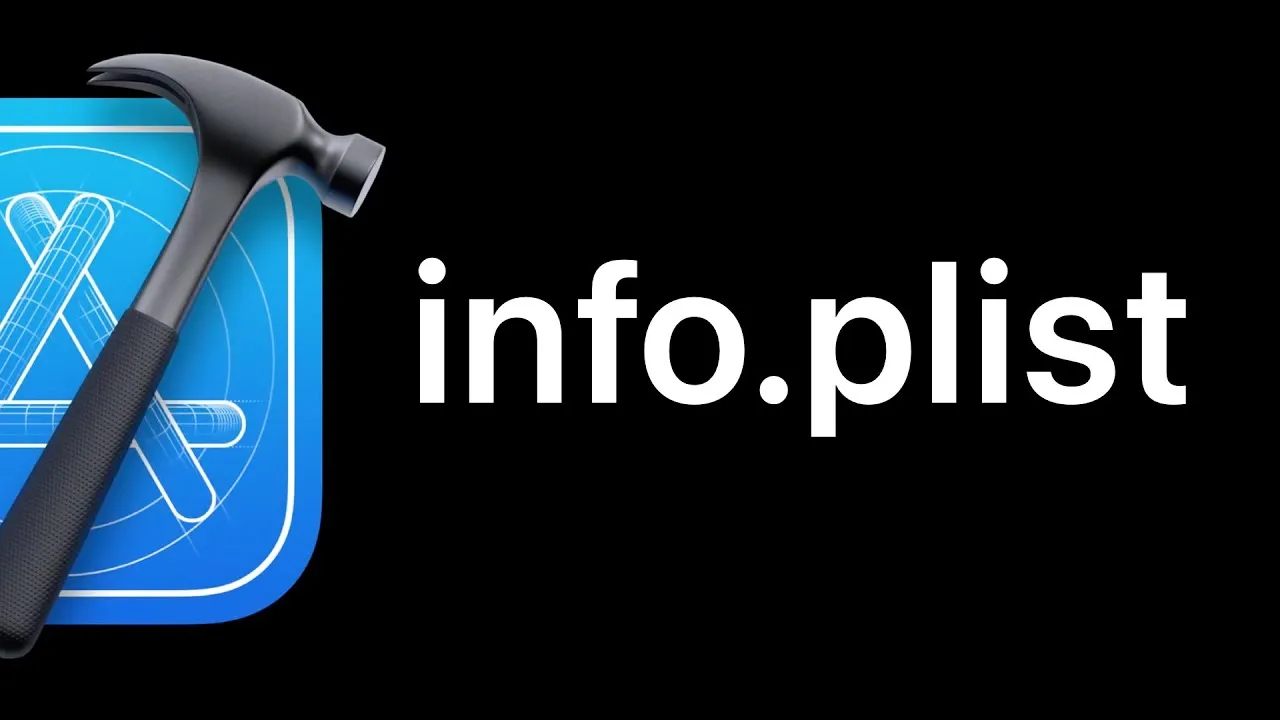The Importance of Info.plist in iOS Development
The Info.plist file, short for Information Property List, is a crucial component in iOS development with Xcode. This XML file contains essential configuration data for your app, which the operating system uses to determine how the app should behave and interact with the system and other apps. Understanding and correctly configuring Info.plist is vital for ensuring your app runs smoothly and adheres to Apple’s guidelines.

What is Info.plist?
The Info.plist file provides a central place to store configuration data. It contains key-value pairs that define various aspects of your application. This file is mandatory for every iOS app and is automatically created when you start a new project in Xcode.
Structure of Info.plist
The Info.plist file is structured as an XML document. Here’s a basic example:
<?xml version="1.0" encoding="UTF-8"?>
<!DOCTYPE plist PUBLIC "-//Apple//DTD PLIST 1.0//EN" "http://www.apple.com/DTDs/PropertyList-1.0.dtd">
<plist version="1.0">
<dict>
<key>CFBundleName</key>
<string>MyApp</string>
<key>CFBundleIdentifier</key>
<string>com.example.MyApp</string>
<key>CFBundleVersion</key>
<string>1.0</string>
<key>CFBundleShortVersionString</key>
<string>1.0</string>
</dict>
</plist>
In this example, the keys define basic metadata about the app, such as its name, bundle identifier, and version.
Key Properties in Info.plist
- CFBundleName: The name of the bundle. This key is a user-visible string that identifies the app.
- CFBundleIdentifier: A unique identifier for the app, typically in reverse domain name notation (e.g.,
com.example.MyApp). - CFBundleVersion: The build version number of the app.
- CFBundleShortVersionString: The release version number of the app, which is a user-visible string.
- UILaunchStoryboardName: Specifies the storyboard or xib file to use for the app’s launch screen.
- UIRequiredDeviceCapabilities: Defines the hardware features that your app requires to run.
- NSAppTransportSecurity: Allows configuring the app’s network security settings.
- NSLocationWhenInUseUsageDescription and NSLocationAlwaysUsageDescription: Describe why the app needs access to the user’s location.
- NSCameraUsageDescription: Describes why the app needs access to the camera.
- NSMicrophoneUsageDescription: Describes why the app needs access to the microphone.
Importance of Info.plist
- App Configuration: The
Info.plistfile configures essential aspects of your app. Incorrect configurations can lead to app crashes, rejections from the App Store, or unexpected behavior. - Permissions and Privacy: By specifying usage descriptions for various system features (e.g., camera, location services), you inform users why your app needs access to their data, which is crucial for transparency and compliance with Apple’s privacy policies.
- Compatibility and Capabilities: Defining required device capabilities ensures that your app is only installed on compatible devices, preventing potential runtime issues.
- Launch Information: Setting the launch screen and icons through
Info.plisthelps in creating a consistent user experience from the moment the app is opened.
Real-Time Examples
- Configuring App Transport Security:
<key>NSAppTransportSecurity</key> <dict>
<key>NSAllowsArbitraryLoads</key> <true/> </dict>
- This setting is often used during development to allow all HTTP connections. However, it’s crucial to refine these settings for production to ensure secure connections.
- Requesting Location Access:
<key>NSLocationWhenInUseUsageDescription</key>
<string>This app requires access to your location to provide personalized experiences.</string>
- Adding this key ensures that your app asks for location permission with a clear message to the user.
- Declaring Required Device Capabilities:
<key>UIRequiredDeviceCapabilities</key>
<array>
<string>armv7</string>
<string>gps</string>
</array>
This ensures that only devices with ARMv7 architecture and GPS capabilities can install your app.
Best Practices
- Keep it Minimal: Only include keys that are necessary for your app to function. Unnecessary keys can complicate your
Info.plistand introduce potential errors. - Clear Descriptions: Provide clear and concise descriptions for all usage keys to ensure users understand why your app needs specific permissions.
- Regular Updates: Regularly review and update your
Info.plistto ensure it remains accurate and up-to-date with the latest iOS updates and your app’s features. - Security: Avoid enabling
NSAllowsArbitraryLoadsfor production builds. Instead, specify the necessary exceptions to maintain security. - Testing: Test your app on various devices to ensure that the
Info.plistconfigurations work as expected across different hardware and iOS versions.
Conclusion
The Info.plist file is a foundational aspect of iOS app development that holds critical configuration details. Proper management of this file ensures your app’s smooth operation, adherence to user privacy, and compliance with Apple’s guidelines. By understanding and correctly configuring Info.plist, you lay a solid foundation for a robust and reliable iOS application.
Learn Mobile App in Ramanathapuram offers top-tier training for iOS, Android, React Native, Flutter, and Mobile App Automation. Our expert instructors provide hands-on courses designed to equip you with the skills needed for a successful career in mobile app development. Whether you’re looking to master iOS, Android, React Native, Flutter, or Mobile App Automation, Learn Mobile App is your go-to destination for comprehensive, practical, and industry-relevant training. Visit our website to discover more about our courses and start your journey towards becoming a mobile app development expert today!

